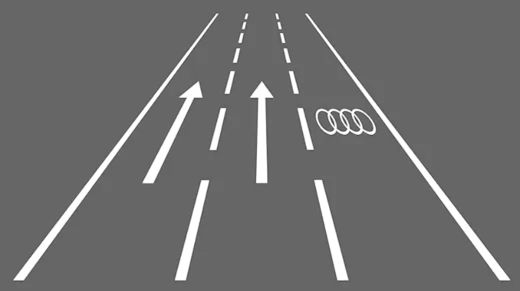This story first cropped up last November. Well, Sophie Morgan – who I didn’t name at the time out of respect – did. She cropped up again in December in another, related story.
Even back then, the claims she was making were factually incorrect. It is wrong for anyone with such inaccurate information to talk to newspapers or TV stations as if they were authorities on a subject, because the media has absolutely no interest in accuracy. Dangerous myths are started and perpetuated quite easily this way. It is also of dubious merit to play on one’s disabilities to get a bigger say in such matters.
Sophie Morgan is not an authority on learning to drive. In her own words, she was apparently to blame for the accident which put her in a wheelchair:
It was 2003 and I was 18. I had just received my A-level results and was at a friend’s party. A group of us piled into a Renault Clio and sped off down the road.
Like Lauren [used in the Daily Mail story’s computer simulation], I was inexperienced and overly confident. The passengers around me were drunk. That is my last memory of the night. I lost control and flipped the car into a field.
Note the words “sped”, and the fact that drink is mentioned. So it makes my blood boil when in this latest article she claims:
…the driving licence isn’t fit for purpose…
…We don’t experience driving on the motorway, or driving at night, or with passengers or loud music…
I’m sorry, but this is misleading nonsense. And I find it offensive that, in an indirect way, I am being held partly responsible by this woman for all the juvenile lunatics who end up killing or seriously injuring themselves because of “speeding” off and being around “drunk people” when they’ve just passed their tests. It is the lifestyle and the upbringing which is almost totally to blame – not the driving lessons or the driving test.
In the last two weeks I have taken at least half a dozen of my pupils on to the A46 – a busy dual carriageway and, as I always explain to them, “the nearest thing I can get to taking you on the motorway”. I make damned sure they get up to – and maintain – 70mph when it is safe to do so, and I make damned sure they overtake lorries and slower moving vehicles. I make damned sure they learn how to merge properly when joining, and how to watch for others joining when passing junctions. We get to see spanking new red, green, white, and amber road studs, roundabout junctions, the lot. To get there we journey along a single track road, and various rural roads with lots of bends. I explain clearly the skewed accident statistics associated with young drivers and rural roads. I cover limit points, anticipation, and planning.
Their early attempts to drive along rural roads – with poor positioning due to the narrowness, and jerky steering through not looking far enough ahead and anticipating – provide ideal learning material to explain why new drivers – with these same weaknesses potentially only just below the surface – have accidents when they go out on such roads with a car full of their mates and loud music blaring. Apart from “mind the kerb”, the second most common thing I end up saying is “that’s too fast” – which is particularly relevant when we first start dealing with lots of rural bends. It is closely followed with “watch where you’re going” when they turn late on a bend. By the time they reach test standard, they can comfortably drive any route I take them on. So all this is covered.
Recently, I’ve taken several of my ex-pupils on motorway lessons, and I’ve been impressed with how they’ve handled it (one last week hadn’t driven since she passed more than 6 months ago, but handled it perfectly). Quite honestly, there is little real difference between a 70mph dual carriageway and a motorway (except to the anal retentives out there) when it comes to driving safely on either of them. The biggest problem is other drivers, for whom the National Speed Limit (or any speed limit, in fact) is regarded as either an advisory or a bare minimum speed.
At least 80% of my pupils take some lessons in the dark, and only those who start and pass during the summer months are likely to miss out (I’ve had some who have only ever driven in the dark). Most have at least one lesson with mum or dad (or husband or wife) in the back so I can point out what to look for when doing private practice, and the pupil invariably drives differently in those circumstances, which I use as another demonstration of what can happen when they pass. And I have all kinds of conversations with people on lessons – using any mistakes that result as an example of what it would be like “with your mates in your ear” or “the kids playing up in back”.
So having covered just about all of the possible pitfalls in my lessons, what exactly does Sophie Morgan think is missing?
I ask that, because any one of my pupils – any of those who have driven at night, at speed, in snow, mum or dad in the back seat, and along the narrowest of country roads – is automatically at risk of having an accident as a result of judgement error if they push the limits of their little experience too far.
The driving test does not – and absolutely never has claimed to – put complete, experienced, mature drivers on the roads. It is the first stage of learning to drive; the beginning of a lifelong learning curve, recognising that the new driver is immature (and needs to grow up), inexperienced (and needs to gain experience), and is not the fount of all knowledge (even though he or she is almost certainly going to believe otherwise these days). And that’s where the problem clearly lies: the attitude of the individual.
When I passed my test – or rather, when I first got my own car and went out alone – I was absolutely shitting myself! I only ever had one accident that was my fault (that was more than 10 years later) when I braked on sheet ice and skidded into a kerb, damaging my front suspension. For these reasons, I explain to all my pupils about going out alone for the first time, and about driving in winter (assuming we don’t get a chance to do it for real). I have covered all the bases any instructor could – or should – be expected to cover.
This attitude problem goes beyond being a smart arse once they’ve passed, too. A lot of people want to learn to drive for the lowest amount of money possible. That causes problems in itself, because a cheapo instructor isn’t going to be taking anyone on any long journeys in order to save fuel, and a normal instructor faced with someone who is strapped for cash will be trying to balance “when can I book my test” and “I can only afford 1 hour lessons” (plus lots of cancellations) against the prospect of losing the pupil altogether. Add a good dose of “my dad says he only had three lessons before he passed”, and the driving lessons involved are likely to be intense and biased towards merely passing the test.
Is it any wonder that they have accidents? And yet they still try to blame their lessons.
 I’ve written before that getting DAB radio in my car was one of the best things I have done. At the time, that little Pure Highway served its purpose well. But like most new technology it was consigned to the gadget drawer when I decided to get the DAB radio option in my Ford Focus.
I’ve written before that getting DAB radio in my car was one of the best things I have done. At the time, that little Pure Highway served its purpose well. But like most new technology it was consigned to the gadget drawer when I decided to get the DAB radio option in my Ford Focus.
 I’ve got mine on pre-order from Amazon. This really is The One that I’ve been waiting for!
I’ve got mine on pre-order from Amazon. This really is The One that I’ve been waiting for! It came in on the newsfeed because it contains the terms “pupil” and “driving instructor”, and so would have been sent to recipients worldwide. This
It came in on the newsfeed because it contains the terms “pupil” and “driving instructor”, and so would have been sent to recipients worldwide. This 